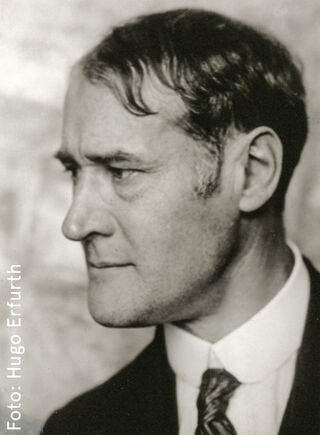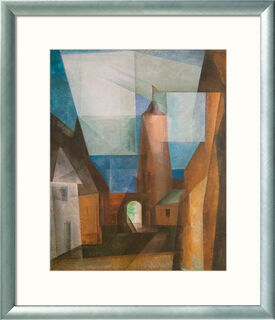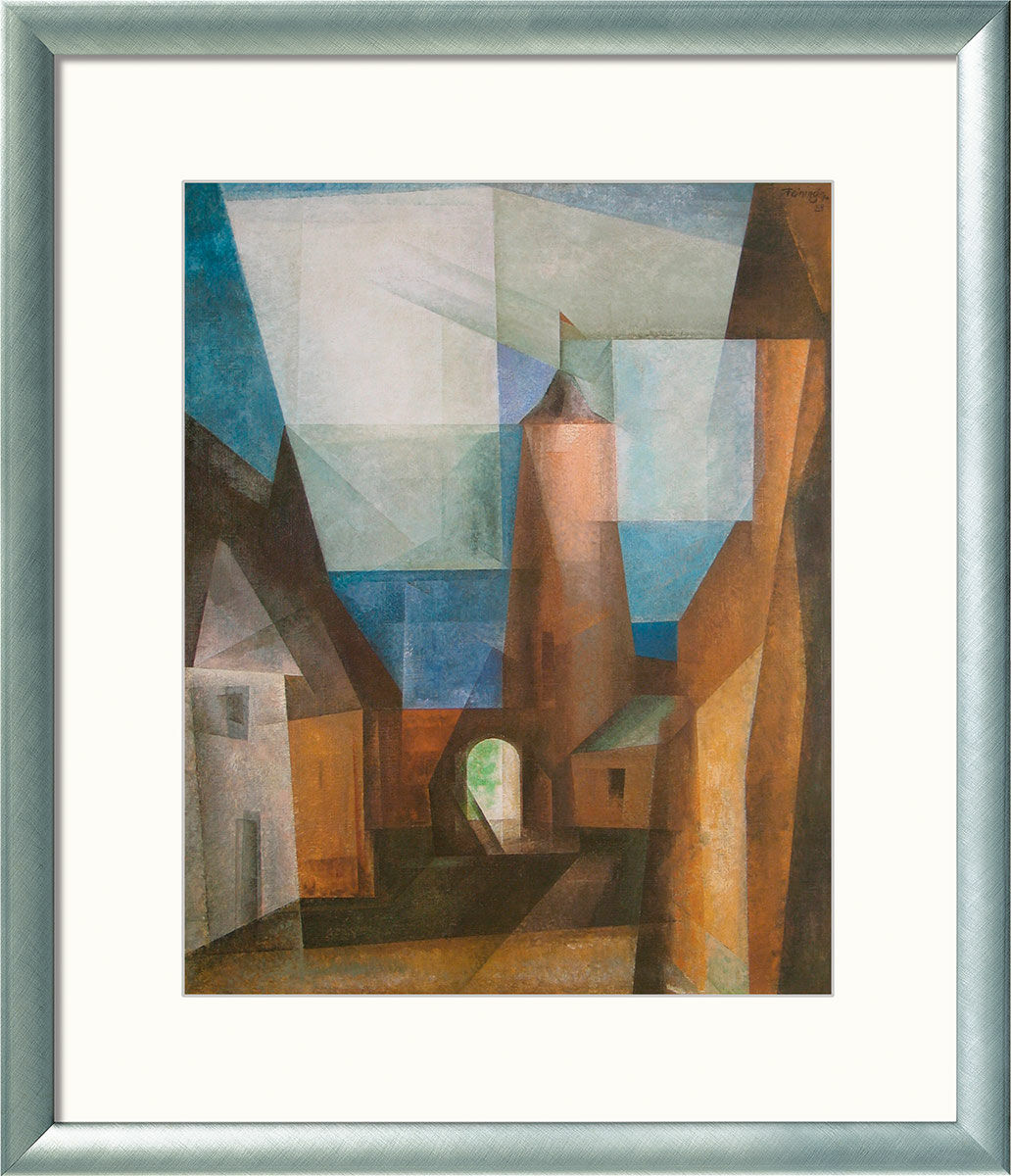Picture "The Towert Grützturm in Treptow by the River Rega" (1928), framed


Picture "The Towert Grützturm in Treptow by the River Rega" (1928), framed
Quick info
reproduction | framed | passe-partout | glazed | size 82.7 x 71.2 cm (h/w)
Detailed description
Picture "The Towert Grützturm in Treptow by the River Rega" (1928), framed
Feininger discovered the hinterland of the river mouth Rega during his Baltic Sea stays. The river frames the small town of Treptow in western Pomerania, Germany, on three sides. The German-American painter constructs his picture from the medieval tower called Grützturm, parts of the town wall and the adjoining houses. But no matter how present the buildings may be, the blue of the river behind them and the bright sky intrude on the city motif. With his prismatic surfaces, Feininger makes visible the interlocking of the different levels of perception.
Original: Oil on canvas, Hessisches Landesmuseum, Darmstadt.
High-quality reproduction framed in a sophisticated solid wood frame with passe-partout, glazed. Size 82.7 x 71.2 cm (h/w).

About Lyonel Feininger
1871-1956
Lyonel Feininger is known for his depictions of streets, cities and ships, which are composed of prismatically broken forms and inspired by Cubism and the art of Robert Delaunay.
The painter and graphic artist was born in New York in 1871 as the son of German musicians. He first came to Germany at the age of 16 for a concert tour of his parents and stayed there to study at the Hamburg School of Applied Arts and later at the Royal Prussian Academy in Berlin. After a study visit to Paris, he continued living and working for many years in Germany, where he was close to the "Blauer Reiter" artists' group. Starting in 1919, he made his mark as a master for the graphic workshops of "Bauhaus" in Weimar, Dessau and Berlin.
Feininger, along with Schlemmer, most explicitly realised the Bauhaus ideal of order. For him, the starting point is not the human figure but architecture, the strict geometric structure of forms that he observed in Gothic churches. His studies of the architecture of small German towns established his light-flooded, prismatic style, which was to become a model for many artists.
Feininger first devoted himself to German townscapes and churches. During the National Socialist era, the Nazi Party officially declared Feininger’s work to be "degenerate", which forced him to return to New York in 1937. There he created his famous impressions of the architecture of Manhattan and New York.
Modern art movement. The term originates from the Latin word cubus = cube. A primary influence that inspired the cubists was a concept made by Paul Cézanne according to which the reality could be reduced to the cube, cone and ball. In terms of presentation, cubists focused on the subject from a multitude of viewpoints to represent the subject in a greater context.
Masters of Cubism are Georges Braque, Pablo Picasso, Juan Gris, Fernand Léger. Alexander Archipenko is the best-known sculptor among the Cubists.


